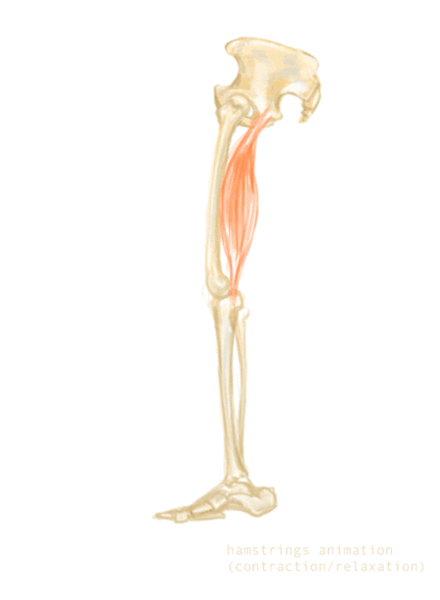
Tips to protect your Hamstrings
Tips to protect your hamstrings
Big plans to blitz your next sporting event, or just starting into training with uncertain goals at this point in time? Either way the one thing you don’t want is for injury to hamper your chances of achieving your ambitions. Injury prevention is a key component of any sound training regime and that means understanding where weaknesses lie and how to strengthen those weak points with minimal injury risk. Recently Jamie Barnes, an accredited exercise physiologist contributed this piece to the Exercise Right web site. In this you will find good information to help reduce the likelihood of hamstring injuries, a common problem among runners in particular.
Hamstring injuries are one of the well-researched topics within the sports industry.
So it may come as a surprise to some to know that they continue to be one of the most common sporting injuries.
This article will discuss the latest information on common hamstring injury mechanisms, risk factors, as well as the type of exercises that should be included in a hamstring injury risk reduction program.
MECHANISM OF INJURY TO HAMSTRINGS
The two most common locations for a hamstring strain are at the biceps femoris long head (viz. long muscle down back of leg that flexes knee), and proximal tendon of the semimembranosus (viz. medial of the three hamstring muscles and aids in knee flex and hip extension) (Brukner, 2015).
It is proposed that damage to the biceps femoris likely results from high-speed running, particularly during the terminal swing phase of high speed running (Malliaropoulos et al., 2012). During this phase of the running cycle, peak hamstring stretch is coupled with active lengthening contraction, creating an environment that places an extremely high demand on the musculotendinous (viz. combined muscle and tendon) unit.
Damage to the proximal tendon of semimembranosus is thought to occur during excessive lengthening of the muscle, where the stretch placed on the musculotendinous unit exceeds its ability to control the force of the movement. This can occur during movement such as a kick or slide (Brukner, 2015).
RISK FACTORS FOR HAMSTRING INJURY
- Previous injury
- Increasing age
- Reduced flexibility
- Poor running mechanics
- Improper training loads
- Fatigue
- Low eccentric strength
Reducing your risk of hamstring injury
Eccentric training has been widely reported as an effective way to reduce the risk of hamstring injury, due to the eccentric behaviour of the hamstrings in the running cycle. For a hamstring strength program to be as effective as possible, is prudent to integrate a combination of hip and knee dominant exercises, in order to target both proximal and distal portions of the musculotendinous unit (viz either end of your hamstrings). Examples of useful hip dominant exercises include the Romanian deadlift, kettlebell swings and supine elevated bridges. Examples of useful knee dominant exercise include the Nordic curl and leg curl. It is also important to include a variety of integrated hip and knee exercises into a strength program, such as a glute ham raise and squat variation.
Joint mobility is also important to ensure correct mechanics are carried out throughout the kinetic chain. Lack of mobility in one region has the potential to disrupt correct mechanics further along the chain, predisposing surrounding musculature to injury. Regular stretching and self-myofascial release techniques can assist with maintaining healthy muscle lengths, contributing to optimal joint mobility.
Training load management, as is the case for a myriad of injuries, is prudent for reducing the risk of hamstring injuries. High training load, incorporating high-speed running, may serve as a protective factor for many injuries (Gabbett, 2016), but must be applied in a carefully-planned manner. An Accredited Exercise Physiologist will have the skills and knowledge to provide you with a training plan that carefully considers your overall volume, to optimise your conditioning and injury risk reduction, while avoiding over-training.
Key messages
- The main mechanisms of a hamstring injury are high-speed running and excessive lengthening
- Previous injury, increasing age, reduced flexibility and reduced strength and some of the main risk factors for hamstring injury
- Eccentric strength training, joint mobility and training load management are three ways to reduce your risk of sustaining a hamstring injury
- An Accredited Exercise Physiologist can provide you with strength and conditioning programs to reduce the risk of a hamstring strain
References
- Brukner, P. (2015). Hamstring injuries: prevention and treatment—an update. British Journal of Sports Medicine, 49(19), pp.1241-1244.
- Gabbett, T. (2016). The training—injury prevention paradox: should athletes be training smarterandharder?. British Journal of Sports Medicine, 50(5), pp.273-280.
- Malliaropoulos, N., Mendiguchia, J., Pehlivanidis, H., Papadopoulou, S., Valle, X., Malliaras, P. and Maffulli, N. (2012). Hamstring exercises for track and field athletes: injury and exercise biomechanics, and possible implications for exercise selection and primary prevention. British Journal of Sports Medicine, 46(12), pp.846-851.
We thank Jamie Barnes and Exercise Right (http://exerciseright.com.au) for publishing this great article.
